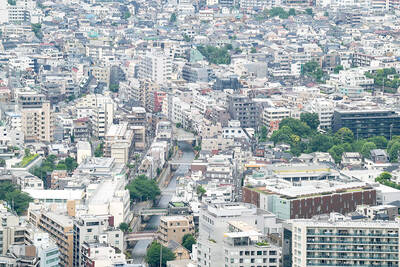Within the genre of nonfiction books that homes in on a particular substance or subject -- salt, maps, the color magenta -- it helps the writer to have an exceptional affinity with the material. Fiammetta Rocco certainly has the inside track on malaria. She has had it herself. Her father has had multiple recurrences. Her grandparents lived on a farm in Africa, where malaria was even more prevalent than tick fever, filariasis, beriberi, bilharzia, kwashiorkor or rinderpest.
And her great-grandfather was involved in the building of the Panama Canal, when tarantulas seemed like the worst menace around. Once the hospitals began placing the legs of beds in bowls of water to keep the tarantulas away, mosquitoes started hatching, and a new wave of malaria was born.

Thus equipped with family memories, Rocco sets out to explain everything you ever wanted to know about malaria (it resembles yellow fever, absent the black vomit) and more. She is quick to admit that this subject has often been dealt with before (most memorable malaria book title: Skeeter Beaters), but there is more than enough minutiae to go around. For those who never knew that the combination of gin and tonic originated as a way to make a malarial cure more tolerable, well, now you know.
Rocco, who is the literary editor of The Economist, makes the pursuit of quinine (an ingredient in tonic water) her book's primary focus. She cites early discoveries of the title tree, which would be named cinchona (with a bark that yields quinine) in Peru, where early Jesuit missionaries understood its importance. She also discusses how valuable this substance would have been in Rome, which at one time was "the most malarious city on earth."
In 1623, when the Sacred College of Cardinals was convened to choose a successor to Pope Gregory XV, malaria felled many of these clergymen. "Even the Borgias, who tried valiantly over the years to murder one another, could not kill each other or their enemies so regularly or so reliably as would malaria," she observes.
Rocco devotes considerable research to Jesuit records about how cinchona found its place in the pantheon of medicines. Though it is not clear how she knows about an ocean crossing of Jesuits to South America in 1605, that "gigantic waves hurled themselves onto the vessel, throwing up thick columns of spray that then collapsed upon the deck, drenching everything in a foamy swirl and threatening to drive the ship onto the jagged rocks," her information is mostly substantive.
But inevitably, in a book of this genre, the odd little details begin to seem as noteworthy as the major developments. So: in 1629 a shipment of three thousand pens was sent to the Jesuit College in Santiago, Chile. And for those unfamiliar with the Peruvian national emblem, it depicts a vicuna, a horn of plenty and a cinchona tree.
In much the same spirit, readers will learn that in 1683 the Royal Society examined subjects like the Arabic alphabet, the anatomy of the rattlesnake, the smell and color of wine, the genitals of the wild boar; in this atmosphere of research into natural history, cinchona bark naturally warranted further analysis. And when it became apparent that this substance could stop malaria, cinchona became a force in history. In 1809 Napoleon sabotaged the British army in Holland by flooding the countryside and letting malaria run rampant. "We must oppose the English with nothing but fever, which will soon devour them all," he said.
The Miraculous Fever-Tree goes on to chronicle the strategic cultivation and harvesting of cinchona in parts of the world to which its seeds were imported, including India. It follows the development of a widely marketable malaria remedy by entrepreneurs like Dr. John Sappington, who sold his own brand of fever pills. In the context of the book's other fine points, it is not surprising to learn that Sappington was also the great-great-great grandfather of Ginger Rogers.
Malaria currently kills one person every 15 seconds, according to a WHO statistic Rocco cites, and despite the development of synthetic remedies, quinine is still being used.
This book is filled with thumbnail sketches of many figures involved in scientific research. (Dr. Richard Spruce: "a tall north countryman who played the bagpipes, the soft-spoken bachelor was as renowned for his modesty as for his encyclopedic knowledge of mosses.") It is also full of increasingly grisly details as the investigation begins to involve mosquitoes as malaria carriers. "If I passed my hand across my face, I brought it away covered with blood and with the crushed bodies of gorged mosquitoes," Spruce wrote colorfully to a friend.
The most impressive scientist here, and the one who won a Nobel Prize in 1902 for research into mosquito-related matters, was Ronald Ross. His dissection of countless mosquito stomachs and thoraxes was instrumental in tracing a malaria-causing parasite to the mosquito's salivary gland. That kind of detail is life's blood to a book like this.

The canonical shot of an East Asian city is a night skyline studded with towering apartment and office buildings, bright with neon and plastic signage, a landscape of energy and modernity. Another classic image is the same city seen from above, in which identical apartment towers march across the city, spilling out over nearby geography, like stylized soldiers colonizing new territory in a board game. Densely populated dynamic conurbations of money, technological innovation and convenience, it is hard to see the cities of East Asia as what they truly are: necropolises. Why is this? The East Asian development model, with

June 16 to June 22 The following flyer appeared on the streets of Hsinchu on June 12, 1895: “Taipei has already fallen to the Japanese barbarians, who have brought great misery to our land and people. We heard that the Japanese occupiers will tax our gardens, our houses, our bodies, and even our chickens, dogs, cows and pigs. They wear their hair wild, carve their teeth, tattoo their foreheads, wear strange clothes and speak a strange language. How can we be ruled by such people?” Posted by civilian militia leader Wu Tang-hsing (吳湯興), it was a call to arms to retake

Desperate dads meet in car parks to exchange packets; exhausted parents slip it into their kids’ drinks; families wait months for prescriptions buy it “off label.” But is it worth the risk? “The first time I gave him a gummy, I thought, ‘Oh my God, have I killed him?’ He just passed out in front of the TV. That never happens.” Jen remembers giving her son, David, six, melatonin to help him sleep. She got them from a friend, a pediatrician who gave them to her own child. “It was sort of hilarious. She had half a tub of gummies,

The wide-screen spectacle of Formula One gets a gleaming, rip-roaring workout in Joseph Kosinski’s F1, a fine-tuned machine of a movie that, in its most riveting racing scenes, approaches a kind of high-speed splendor. Kosinski, who last endeavored to put moviegoers in the seat of a fighter jet in Top Gun: Maverick, has moved to the open cockpits of Formula One with much the same affection, if not outright need, for speed. A lot of the same team is back. Jerry Bruckheimer produces. Ehren Kruger, a co-writer on Maverick, takes sole credit here. Hans Zimmer, a co-composer previously, supplies the thumping